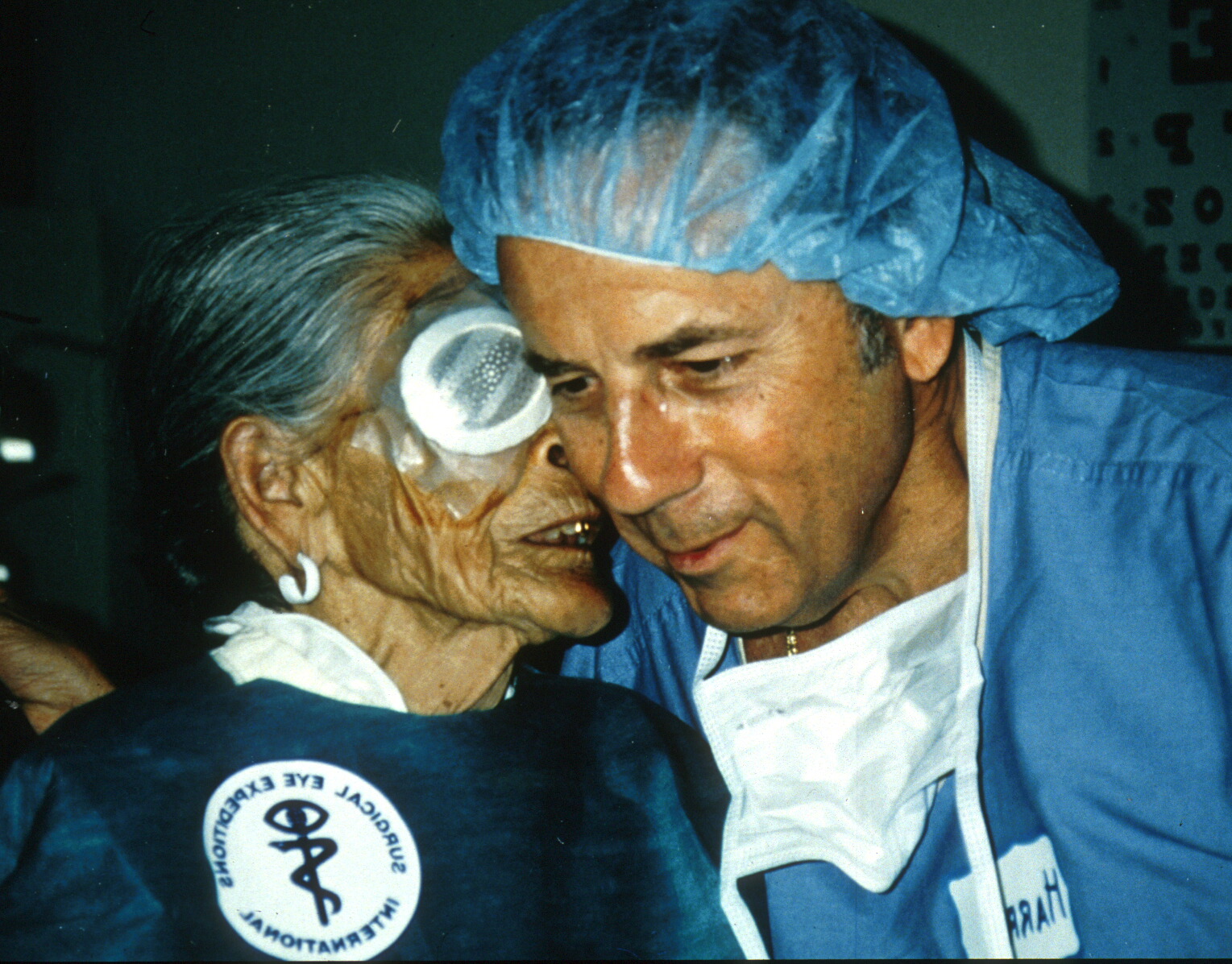
Harry Brown and I go back to 1971. I first met him when he came by Sansum Clinic looking into establishing an ophthalmology practice in Santa Barbara. I recall asking him at that time what his hobbies were. He replied without a pause, “Mankind.” I didn’t know what he meant then, but I know now. He was a visionary, and he indeed made changes that affected “mankind.”
Harry had just completed an around-the-world trip to South Africa, India, and Afghanistan, where he explored the needs that his knowledge as an ophthalmic surgeon might somehow modify. He once told me that the trip had been done on borrowed money and “vapors.” The third-world tour was part of his postdoctoral fellowship at UCLA’s Jules Stein Eye Institute, and his mother, wife, and four children accompanied him. Earlier in his education, Harry had taken a degree in chemistry at the University of Missouri, served in the U.S. Navy during the Korean War, and then graduated from George Washington University School of Medicine in 1959. He interned at the naval hospital at Camp Pendleton and the medical division of the Oak Ridge Institute of Nuclear Studies.
For Harry, in many of the disadvantaged sites he visited, surgically curable blindness stood out as a significant untreated affliction. There were various causes, but the outstanding one was advanced cataracts — cataracts so dense in both eyes that the person could see only shadows and white glare.
This is a very treatable disease in the Western world. In the third world, the emphasis for the medical doctor is general medicine, general surgery, and infectious diseases, but not blindness from cataracts. People don’t die from blindness, and it is an accepted affliction of age. They became dependent on their families for support. Eventually they cannot see to feed themselves. For folks who have been self-sufficient all their adult lives, this is degrading and humiliating. There were no welfare programs in the countries Harry visited.
As Harry began working as an ophthalmologist at the Santa Barbara Clinic — which merged with Sansum subsequently — he also started gathering a few ophthalmic surgeons and technicians to join him on medical expeditions into Mexico. These first trips were for medical and minor surgery involving the eye. Harry worked with established mission groups to see how they were organized.
The early expeditions, which later became SEE (Surgical Eye Expeditions) International, did not do intraocular surgery (surgery inside of the eye, such as cataract surgery). Cataract surgery requires specialized instruments, a sterile environment, and, very importantly, postoperative care — in other words, someone, namely an ophthalmologist, must follow the patient after surgery.
It became apparent to Harry that to do cataract surgery in remote foreign places, one had to have permission from the local medical doctors, hospitals, or clinics, and the country’s board of health. Several years were spent putting together the team that could accomplish these tasks.
Harry visited embassies in Washington, D.C., and major suppliers of ophthalmic equipment and medications: Alcon, Bausch and Lomb, and Allergan, to name a few. Somehow, he was able to reach the CEOs of the companies and was on a first-name basis with them. Once, at an international meeting of the American Academy of Ophthalmology, Harry introduced me to the president of the academy, and then we had lunch with the CEO of Alcon. At that time, Alcon was probably the major supplier in the world of specialized equipment and medications for eye surgery. This company and others have donated more than $5 million a year in eye medications and equipment for use in SEE clinics throughout the world.
SEE International grew out of Harry’s realization that he needed a structured base in order to attack blindness in the third world. Through SCORE (then the Service Corps of Retired Executives) he found a very competent retired volunteer, the former CEO of the Carnation company, Bill Crocket. They put together the first board of directors for SEE, which I joined, and formed a nonprofit corporation.
Soon, ophthalmic surgeons from the countries Harry had visited began to find SEE International at major ophthalmology meetings. We would promise the host surgeon to supply qualified ophthalmic surgeons, with the necessary medications, intraocular lenses, portable microscopes, autoclaves, visas, board of medicine permits, and so on to assist their hospital or clinic in performing 50-100 cataract surgeries in three to five days. The host doctor would provide the after-surgery care.
Our volunteers would take a week off from their practice and, at their own expense, hand carry four to five large boxes of sterile supplies, scopes, and medications through the airports. These surgeons’ payment was the opportunity to do something as exciting as restoring sight to a blind person who had essentially no hope. It is a dramatic event when the eye patch comes off the day after surgery and the patient sees clear images, color, and their family for the first time in years. Surgeons often cry with the patients in the emotion of restored sight.
Harry was a true visionary. He told me several times: There are those who make things happen, those who help things happen, those who watch things happen, and those who say, “What happened?” Harry wanted to make things happen, and he did. By founding SEE International, he was responsible for restoring sight to more than half a million blind people throughout the third world.
